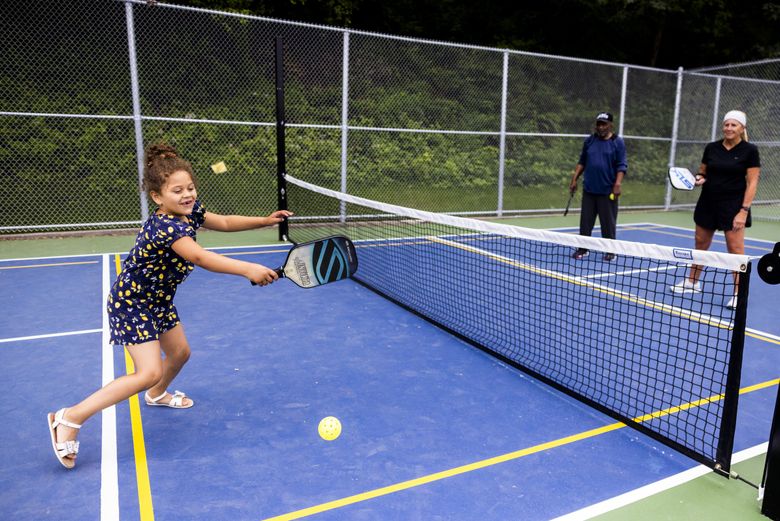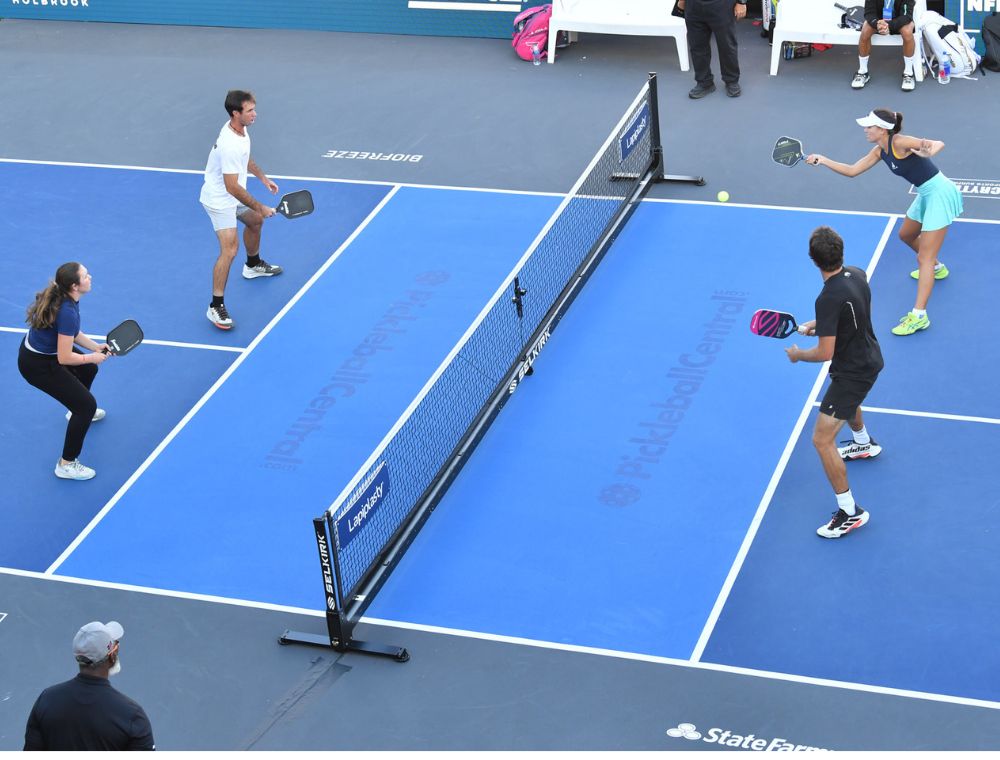Designing the Perfect Backyard Pickleball Court: Secret Elements and Expert Suggestions
Designing the Perfect Backyard Pickleball Court: Secret Elements and Expert Suggestions
Blog Article
Discovering the Numerous Options for Yard Pickleball Judiciaries: A House owner's Guide to Setup and Upkeep
As the appeal of pickleball continues to rise, many property owners are taking into consideration the installment of a committed court in their backyards. This endeavor requires cautious analysis of various variables, such as the offered space, appropriate surface area materials, and continuous upkeep demands. Understanding these components is critical for developing a useful and satisfying playing environment. The trip from conception to execution can be intricate, triggering the need for an extensive guide that addresses both setup and upkeep methods. What are the very best methods to guarantee your court stays immaculate and useful in time?
Evaluating Your Room
When taking into consideration the addition of a pickleball court to your backyard, just how can you successfully analyze the offered space? The initial step is to determine the measurements of your backyard, guaranteeing that you have enough space for a regulation-sized court, which determines 20 feet by 44 feet for doubles play (backyard pickleball court). It's necessary to account for additional room surrounding the court to assist in motion and boost gameplay, commonly suggesting an extra 10 feet on each side
Next, assess the surface of your lawn. A level surface is suitable for a pickleball court, as unequal ground can bring about safety and security risks and affect gameplay. If your backyard slopes or has obstructions such as trees or landscape design features, consider just how these components will influence your court's location and functionality.
Finding Court Surfaces
Choosing the appropriate surface for your yard pickleball court is critical for maximizing efficiency and player safety. The selection of court surface not only influences gameplay yet additionally impacts the resilience and upkeep of the court.
Asphalt and concrete give a hard, resilient surface that can endure the wear and tear of regular play. To alleviate this, numerous house owners opt for supported surfaces or specialized layers that supply some level of shock absorption.
Additionally, modular sports tiles are a significantly preferred choice. These floor tiles are developed specifically for pickleball and offer excellent grip, water drainage, and shock absorption. They can likewise be set up over existing surface areas, making them a functional choice for several yards.
When selecting a surface, consider variables such as environment, budget, and designated degree of play. A well-chosen court surface area will improve your playing experience while making certain safety and security and longevity for your backyard pickleball court. Making an informed decision is necessary for making the most of enjoyment and performance.
Installation Process Overview
Setting up a yard pickleball court commonly involves several vital actions that make certain both capability and longevity. The primary step is to select an appropriate location in your yard, taking into consideration factors such as drain, proximity, and sunshine to your home. Once the website is chosen, clear the location of any plant life, rocks, or debris to develop a degree foundation.
Following, describe the dimensions of the court, which need to be 20 feet wide by 44 feet long for a standard pickleball court (backyard pickleball court). After noting the limits, dig deep into the location to a deepness of about 4 to 6 inches, making sure appropriate drainage. This excavation will enable a stable sub-base
Following this, install a base layer of gravel or crushed stone to promote water drainage and security. Small this layer extensively before continuing. After the base is set, you can put a concrete piece or mount your picked court surface area products, ensuring they abide by the measurements.
Maintenance Tips and Techniques
To make certain the long life and performance of your yard pickleball court, normal upkeep is necessary. Beginning by routinely inspecting the surface area for fractures, particles, and any indicators of wear. Promptly address any kind of problems to avoid further degeneration. Make use of a broom or fallen leave blower to maintain the court clean, getting rid of leaves, dirt, and various other debris that can impact gameplay.

Furthermore, monitor your court's drainage to avoid water merging, which can bring about surface damage in time. Ensure that the bordering landscape guides water away from the court. Take into consideration sealing the surface every couple of years to improve toughness. if your court is made of asphalt or concrete.
Lastly, develop a routine schedule for upkeep tasks, including seasonal checks and repairs, to keep your court in ideal problem and prepared for play. Regular upkeep not just enhances performance but additionally prolongs the life of your yard pickleball court.
Cost Considerations and Budgeting
When preparing for a yard pickleball court, understanding the numerous cost factors to consider is crucial for effective budgeting. The overall expenditure can differ dramatically based on elements such as court size, surface area material, and installation complexity.
First costs generally consist of website preparation, which may entail grading and leveling the land, complied with by the option of surface area-- choices array from asphalt to concrete, with each material affecting both upfront and long-term expenses. As an example, concrete supplies resilience yet includes a higher price, while asphalt may offer a much more economical alternative.
Additionally, take into consideration the costs related to secure fencing, lights, and accessories such as nets and paddles - backyard pickleball court. Secure fencing is vital for maintaining spheres had, and lighting can prolong playtime right into the night hours

Final Thought
To conclude, the installation of a backyard pickleball court involves cautious consideration of space, surface area products, and maintenance demands. Choosing suitable dimensions, such as the advised 20' x 44', together with long lasting surface choices like asphalt, concrete, or modular sports ceramic tiles, adds to a functional field. Routine maintenance and tracking for wear are vital to guarantee the court's durability and optimal efficiency, inevitably boosting the entertainment experience for all users.
A degree surface area is ideal for a pickleball court, as unequal ground can lead to safety hazards and impact gameplay. An appropriate court surface area will certainly boost your playing experience while making certain safety and security explanation and long life for your backyard pickleball court.Following, lay out the dimensions of the court, which should be 20 feet broad by 44 feet long for a basic pickleball court. After the base is established, you can look at more info pour a concrete slab or install your chosen court surface area products, ensuring they stick to the dimensions.
In final thought, the installment of a yard pickleball court involves mindful consideration of space, surface products, and maintenance needs.
Report this page